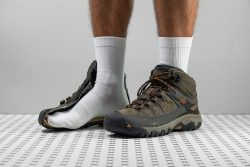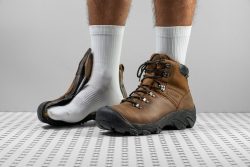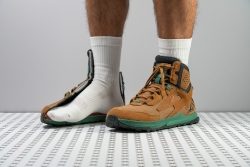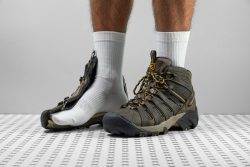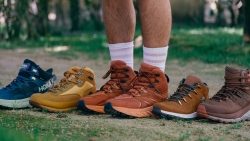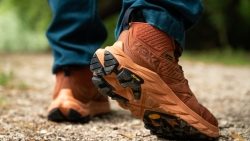4 Best Hiking Boots For Wide Feet in 2024
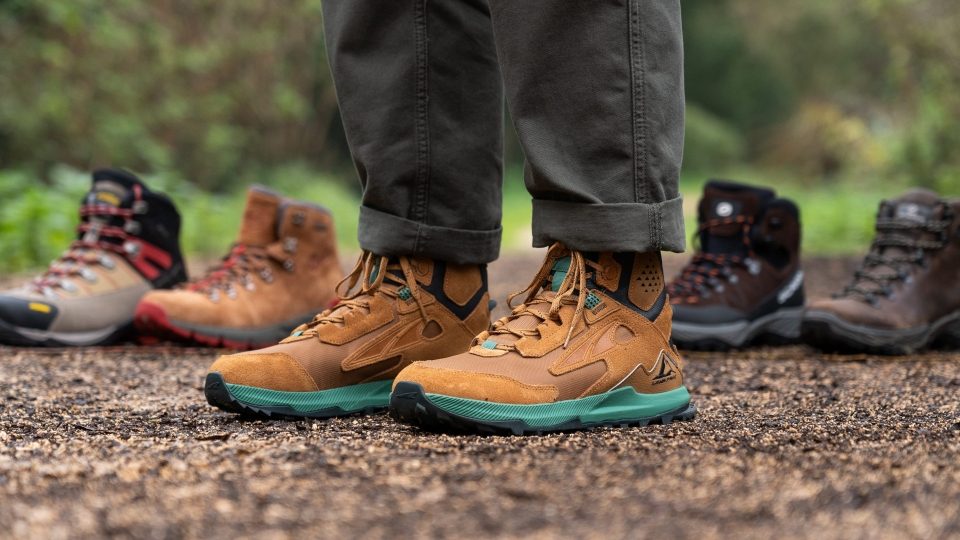
Get a new pair of boots that fit snugly and offer just enough room to wiggle your toes. As an enthusiastic team of reviewers on RunRepeat, we give our best roundups of wide-toe box hiking boots for outdoor lovers who need them. You can now hit the trails with more comfort and fun.
From giant brands like Salomon, Adidas, and Oboz, to Altra, KEEN, and Danner, you have plenty of amazing options to select from. No matter the distance or the intensity and level of difficulty of the terrain, there’s a perfect pair of boots that will keep your feet pretty comfortable.
To help you choose the most ideal footwear, we’ve purchased and tested, both on the trails and in our lab, a lot of wide-toe box hiking boots. We then chose our top picks and generated our very own comprehensive reviews of each of them.
How we test hiking boots
Before we recommend each model on this list, we put in the time at the RunRepeat lab to examine the materials and commercial features of the footwear. We then proceed to the most exciting part of the process, which is field-testing the boots in actual outdoor adventures.
Our method includes:
- Purchasing the hiking boots with a wide-toe box using our own money. This keeps our reviews and recommendations free from any bias or brand loyalty.
- Hiking 30 to 50 miles for each boot to have a first-hand experience of its fit, performance, and comfort level traversing challenging backpacking routes and technical terrain. We also check the boot’s traction, protective features, durability, weight, and more.
- Moreover, we evaluate all aspects of footwear and its overall value, dependability, and wearability based on the tests we conduct inside our lab. We relate them to our observations and impressions when they are faced with extreme outdoor conditions and real-life hikes. Additionally, we uncover all the parts of the shoes by chopping them up into pieces.
Best overall hiking boots with a wide toebox and the best comfort
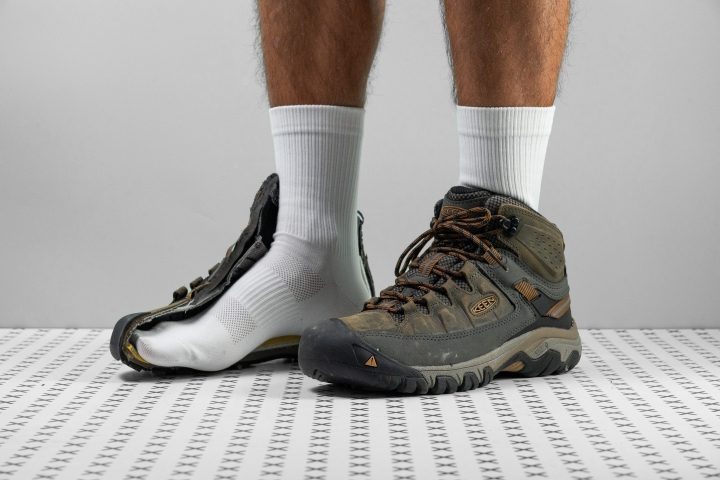











































What makes it the best?
Hiking with the KEEN Targhee III Waterproof Mid, our top wide toebox hiking boot feels unrestricted yet armored at the same time. It offers a healthy balance of soft and tough features to ensure our comfort and protection over various terrains.
Starting with its gentle features, this boot houses an accommodating toebox for our natural toe splay. No need to worry about blisters and hotspots with its wide 106.4/85.5 mm room in the widest and big toe areas. Further enhancing its natural feel is the adaptive midsole that bends freely with our strides. Our bend test confirms it’s 31.8% more flexible than average.
The next highlight is its protective leather upper that seals our feet from water and other debris. We passed through puddles and rivers and stayed warm and dry through our wet escapades. It even includes a toe bumper to ensure we don’t experience painful toe stubs. Proving it’s our armor, it scored a solid 5/5 against our Dremel test.
Beneath our feet is a firm midsole that ensures we remain centered and steady on rugged trails. Our durometer reveals the platform is 22.4% firmer than average, supporting us even as we carry heavy backpacks.
Unfortunately, all its protective features led to a heavyweight 18.2 oz (515g). We recommend exploring other options if a light boot is a priority.
Pros
- Extremely stable
- Great ankle support
- Generously padded and comfortable
- Secure heel hold
- Flexible
- Budget-friendly price
- Laudable warmth
- Performs very well in the cold
- Excellent grip on various terrain
- Short to zero break-in period
- Commendable toe cap
- Roomy toebox
Cons
- Stuffy in the summer
- Lackluster outsole durability
- Firm midsole
- Not ideal for narrow feet
Best backpacking boots with a wide toebox
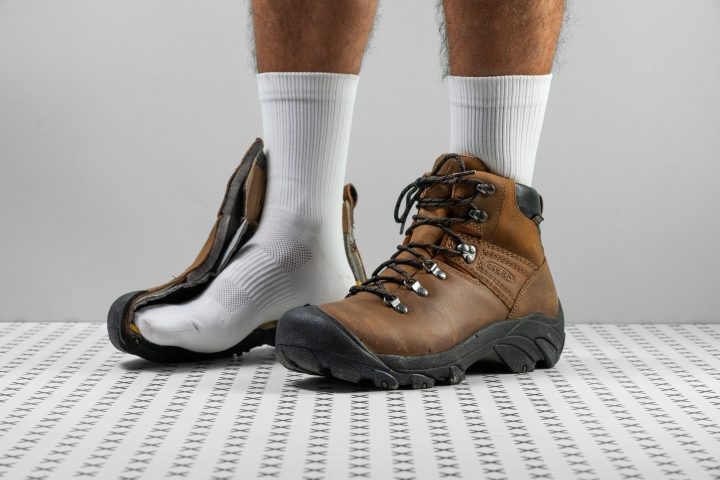









































What makes it the best?
After extensive lab testing and real-world hikes, the Keen Pyrenees emerged as our top pick for backpacking. Crafted from premium nubuck leather and featuring a robust outsole and plush midsole, it offers unparalleled protection and comfort for long treks, particularly in cold conditions.
Our feet feel secure and shielded from various elements, including cold winds, water, sharp rocks, and protruding roots. The durable leather wraps snugly around our feet, ensuring a secure lockdown. Our rigorous Dremel test confirms its toughness, scoring a perfect 5/5 score. Additionally, the Pyrenees boasts one of the hardest outsoles ever measured in our lab, boasting a remarkable 92.0 HC rating, effectively numbing out any debris underfoot.
Despite its ruggedness, the Pyrenees maintains a plush midsole that provides ample impact protection, measuring 37.4% softer than the average. The generous heel stack, combined with an average forefoot, results in a substantial 16.7 mm drop, offering ergonomic relief for backpackers by alleviating pressure on the legs.
Our adventures across uneven and sloped terrain felt stable and supported, thanks to the wide toebox facilitating natural toe splay and the midfoot shank ensuring balanced and controlled strides.
However, with its robust build, the Pyrenees weighs 21.7 oz (615g), making it 3.8 oz (107g) heavier than the average boot. For those seeking a lighter option, we suggest exploring alternative models.
Pros
- Premium nubuck leather quality
- Top-notch waterproofing
- Tons of impact protection
- Surprisingly soft cushioning
- Excellent stability and support
- Very wide, accommodating toebox
- Convenient lacing system
Cons
- Too bulky and heavy
- Tongue edges dig into shins
- Lacks traction for mud, ice, and snow
Best lightweight hiking boots with a wide toe box















































What makes it the best?
The second rendition of the Altra Lone Peak Hiker keeps it all-natural with its wide toebox, standing out as the best lightweight hiking boot in our lab. Our outdoor excursions feel liberated by its airy and free-flowing build, further accentuated by its enticingly affordable price point. At just $150, it's 15% cheaper than the average hiking boot.
Its unrestricted design promotes effortless, all-day wear—even accommodating light jogs with ease. This shoe feels like a breath of fresh air. Its 12.0 oz (339g) weight, 33.3% lighter than average, contributes to its exceptional agility on the trails. During our bend test, it shows 25.6% more flexibility than average, enhancing comfort during long hikes.
Lone Peak Hiker's modest platform and minimal 2.6 mm drop provide a near-barefoot experience without compromising on underfoot cushioning. Its spacious big toe area, boasting a generous width of 91.1 mm compared to the 79.2 mm average, ensures ample room for toe splay, eliminating discomfort and hotspots. The foot-shaped design makes lengthy hikes feel like a breeze.
However, its high flexibility may pose challenges on technical terrain, leading to a lack of sure-footedness. Backpackers and individuals requiring additional stability should explore more supportive options.
Pros
- Exceptionally comfortable
- Astonishingly lightweight
- Gives strides a boost
- Performs consistently in cold conditions
- Superb durability
- Supportive around the ankle
- Excellent attention to detail
- Decent moisture resistance
- Dries quickly
Cons
- Subpar grip on technical terrain
- Underwhelming stability
- Quite hard to put on and off
Best hiking boots with a wide toebox for summer
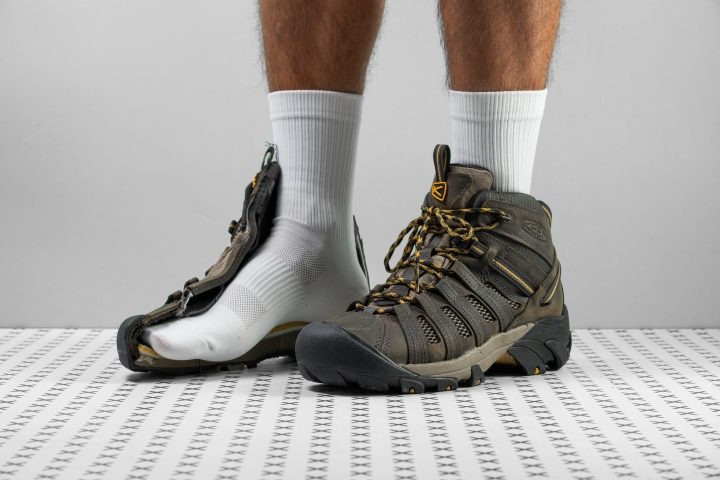








































What makes it the best?
The KEEN Voyageur Mid takes home the prize for the best wide toe box hiking boots for summer. Made with desert hiking in mind, the Voyageur Mid is exceptionally breathable, spacious for wide feet, or in fact feet swollen from the heat and has unwavering traction.
With hot-weather hiking on the cards, we’ve been on the lookout for a breathable boot, and the KEEN Voyageur Mid is just the trick. Moisture-wicking materials making up the upper ensure that our feet dry out quickly after a soaking, and prevent our feet from getting sweaty or smelly. The boot passed our classic smoke test in the lab with excellent grades. Pumping smoke into the boot and watching it to assess how much smoke comes out and how fast, we were pleased to award it an almost-perfect 4/5 for breathability. This is surely a boot for summer hiking.
KEEN’s signature wide toe box is of course implemented in the Voyageur Mid. Our caliper measured 6.5 mm more space than average at the forefoot, and a whopping 9.5 mm extra compared to the average at the big toe! Our toes had plenty of space to move around, and we had no worries about hotspot or blisters. Add to that the impressively durable rubber toe cap, and this is certainly a toe box to write home about!
The multidirectional lugs boast excellent grip on dirt and gravel and we felt surefooted on our test hikes. Measuring the lugs in the lab, we found they come in at 4.6 mm, 0.5 mm deeper than average. The wide footprint of the shoe helps us to gain traction in sand, the home turf of the KEEN Voyageur Mid.
Our lab measurements show that the KEEN Voyageur Mid takes its cushioning seriously - maybe a little too seriously for the average hiker. We measured the heel-to-toe drop at 20.9 mm, which is 7.3 mm higher than average. Such an extreme drop makes sense for hiking in deep sand, where the heel will tend to sink somewhat, but this may be too high for some hikers on regular trails. We recommend that forefoot strikers look into other options.
Pros
- Accommodating fit
- No need to break in
- Excellent traction
- Lightweight
- Sufficient ankle support
- Laudable breathability
- Quick drying
- Versatile
Cons
- Sole started peeling off
- Questionable construction quality
- Too wide for narrow feet
Do you really need wide hiking boots?
It’s important to know whether you actually need a wider hiking boot. If not, a loose fit can cause discomfort and blisters, as the best-case scenario, or something worse.

Here are our general guidelines on how to find the proper fit in hiking boots:
- Go boot shopping later in the day, afternoon, or evening because it’s best to try the boots on when the feet are naturally swollen. It’s a similar swelling that happens on the hike as well.
- When you put the boots on, sense if there are any hot/pressure spots. There should be none.
- Try the boots on the ramp. Go up and down. There should be no heel slipping. There should be no foot sliding within the boot.
- Hikers prefer having 1 thumb’s width of space inside. It’s checked when you push the foot forward and try to put the finger behind your heel or you glue the heel to the back and palpate the toebox to check if there’s room in front of the big toe.
- When buying hiking boots, use the hiking socks you usually wear and orthotics if you have them.
- Make sure to properly break the boots in before your first longer hike.
If you did all of this and realized you need wider hiking boots, great! Everything written in this guide is for you. Here, we focused only on the width of the hiking boots. If you want to learn more about hiking boots in general, please read our ultimate guide on hiking boots, which covers everything from grip to stability to breathability and protection.
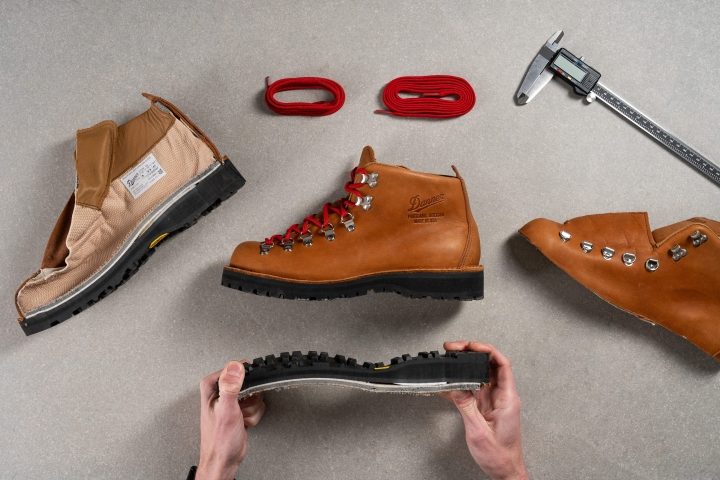
Labels for wide hiking boots
The shoes for men and women are labeled like this:
|
Men |
Women |
|
|
Narrow |
B |
2A |
|
Medium/Standard |
D |
B |
|
Wide |
2E |
D |
|
Extra wide |
4E |
2E |
You can find these labels on the box of the boots, on the boots themselves (next to the size), and on the retailer’s website (if shopping online).
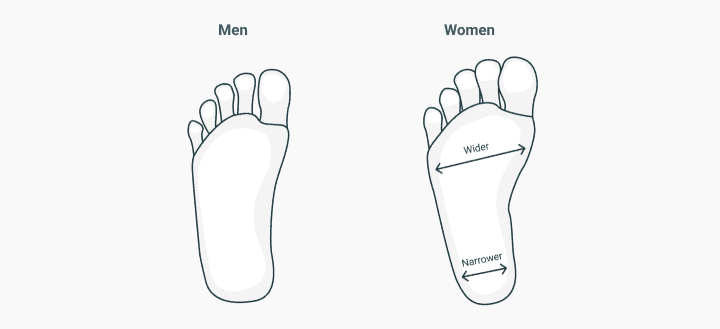
The labels are different because men’s and women’s feet are different. Women tend to have narrower heels and wider forefeet.
Lab measurements of the toebox width
Where that extra space is usually most looked for is the toebox. In our lab, we take 2 measurements: at the big toe and at the ball of the foot (where the boot is the widest).
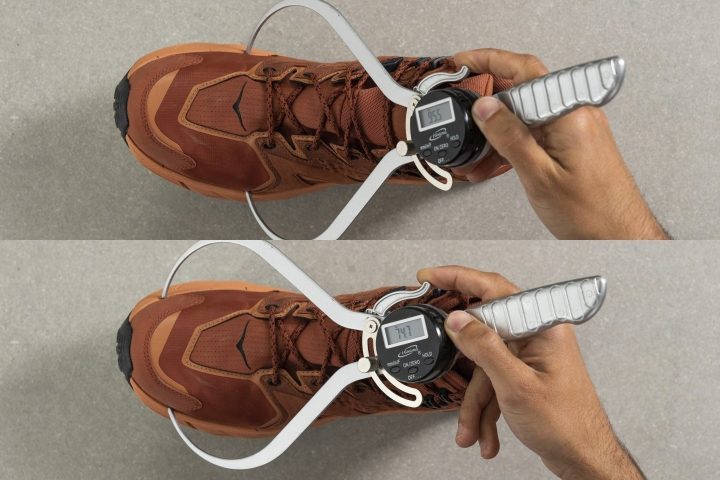
Using a digital caliper to measure the width of the toebox in hiking boots: at the ball of the foot (up) and at the big toe (down)
Because there are many different shapes of toes/feet, it’s important to know both measurements. Some need more space at the big toe, and others are actually ok with the boot tapering (being pointy) as they want a bit more space at the ball of the foot.

But, there’s a caveat. We measure the width of the toebox on the outside. Sometimes, hiking boots have protective overlays there, parts of the rubber or the toebox bumper, etc.

A lot of rubber on the toe bumper (up) vs. very thin protective overlays (down)
Because of this, it’s important to read the review entirely because we also share experiences from our wear tests.
Hiking boot anatomy tips for wide feet
When your toes can’t wait to splay and want every little bit of extra space, we advise getting the boots that:
- Don’t have rubber or stiff protective overlays in the places where your toes would “escape” the toebox. This way, there will be less pressure on the toes in those areas
- Have uppers made of softer or stretchier materials. Touch them and feel them. Stiff leather might be less comfortable than soft mesh.
- If your big toe is actually pointing up, look for hiking boots with more vertical space.
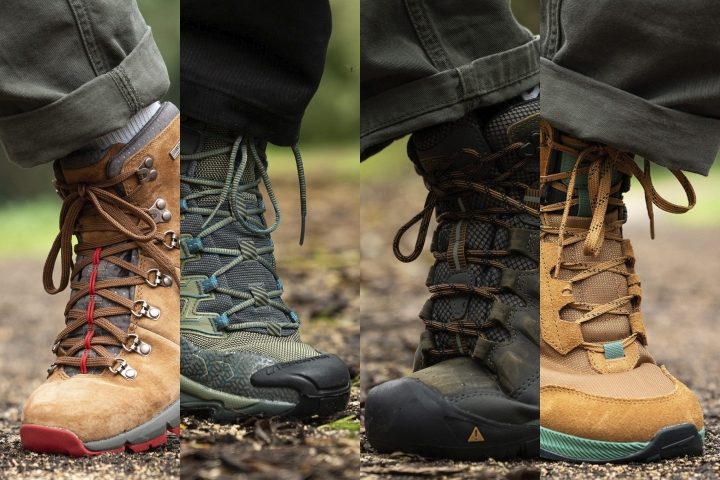
Different amounts of protective overlays and rubber on toe bumpers in hiking boots
To look for hiking boots with more vertical space, you must try them on or check our images of boots cut in half.

Footwear with a higher toebox (more vertical space) on the left and a low toebox on the right
Must-know about foot-shaped hiking boots
Foot-shaped hiking boots have a shape that is very different from what we’re usually used to because it is, well, shaped like a foot. Altra brand has actually trademarked this.

Looking at the foot-shaped hiking boot Altra Lone Peak Hiker 2 during a test hike
What you should know about these boots:
- They, of course, offer more room in the toe box. Beware, as some might be too wide for you.
- Altra makes zero-drop footwear. If you’re not used to wearing zero-drop boots, please read our guide on the heel drop and don’t rush into the new zero-drop boots. A gradual transition is highly recommended!
- These and similar boots are usually not as cushioned and they might offer more ground feel. This can be great if that’s what you’re aiming for, or it can prematurely tire your feet out.
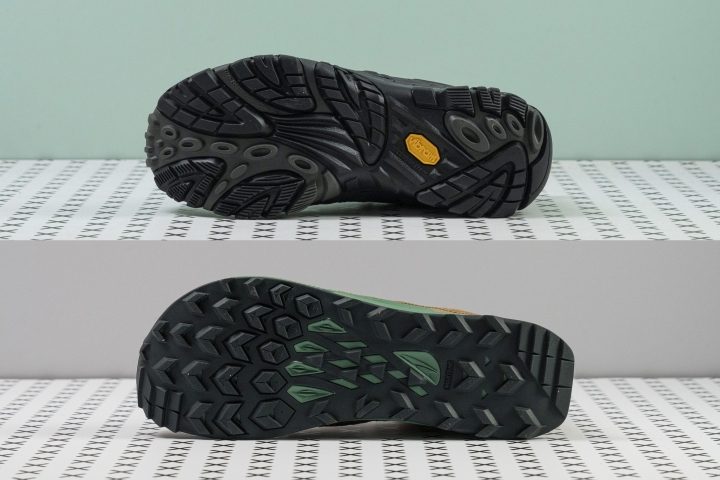
Regular (up) vs. foot-shaped (down) outsole in hiking boots
While all of this sounds like a criticism, it is only a warning so that you enjoy hiking pain-free. Foot-shaped boots are wonderful and have turned out to be great for people who a) need that much space in the forefoot b) love the zero-drop and ground feel.
Loose fit consequences
It is important not to get hiking boots that are too wide. A loose fit can cause:
- Rubbing, painful blisters, and maybe even bleeding. In a loose boot, your heel can start slipping and your feet can start sliding from one side to another.
- Pain, because when the feet are not locked in properly, you might start “grabbing” the base of the boot with your toes. This leads to premature fatigue and pain. With such toe movement, they can also start rubbing the ceiling of the toebox.
- Decreased support and stability. It’s all about a proper lockdown!
Tight fit consequences
On the other hand, if not too lose, the boots can fit too tightly. What happens when your toes are cramped in a toebox?
- Blisters, pain, maybe even bleeding in the areas where your toes are rubbing the toebox, or between the toes if one toe is “more aggressive” than the other (maybe the nail is not trimmed down properly, not polished, etc. so it cuts into the skin of the neighboring toe).
- Black toenails if the toebox is putting pressure on the nails.
- Ingrown toenails or Morton’s neuroma.
- Painful corns and calluses.
- Hallux rigidus and Hallux valgus (bunions) are best treated with a wider toebox for starters.
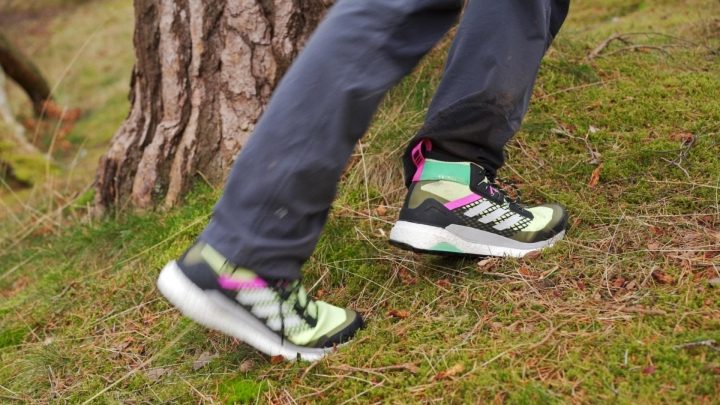
How can socks help you with the fit?
Although the hiking boot should fit as best as possible, socks can help to some (smaller) degree. For example, compression socks are great at, well, compressing your feet, which leads to “more room” in the boot and they are known to help with (against) blisters.

On the other hand, cushioned socks can compensate for feeling too roomy in the boot, so the cushioning can fill that extra space. Woll and bamboo socks are also good for this.

